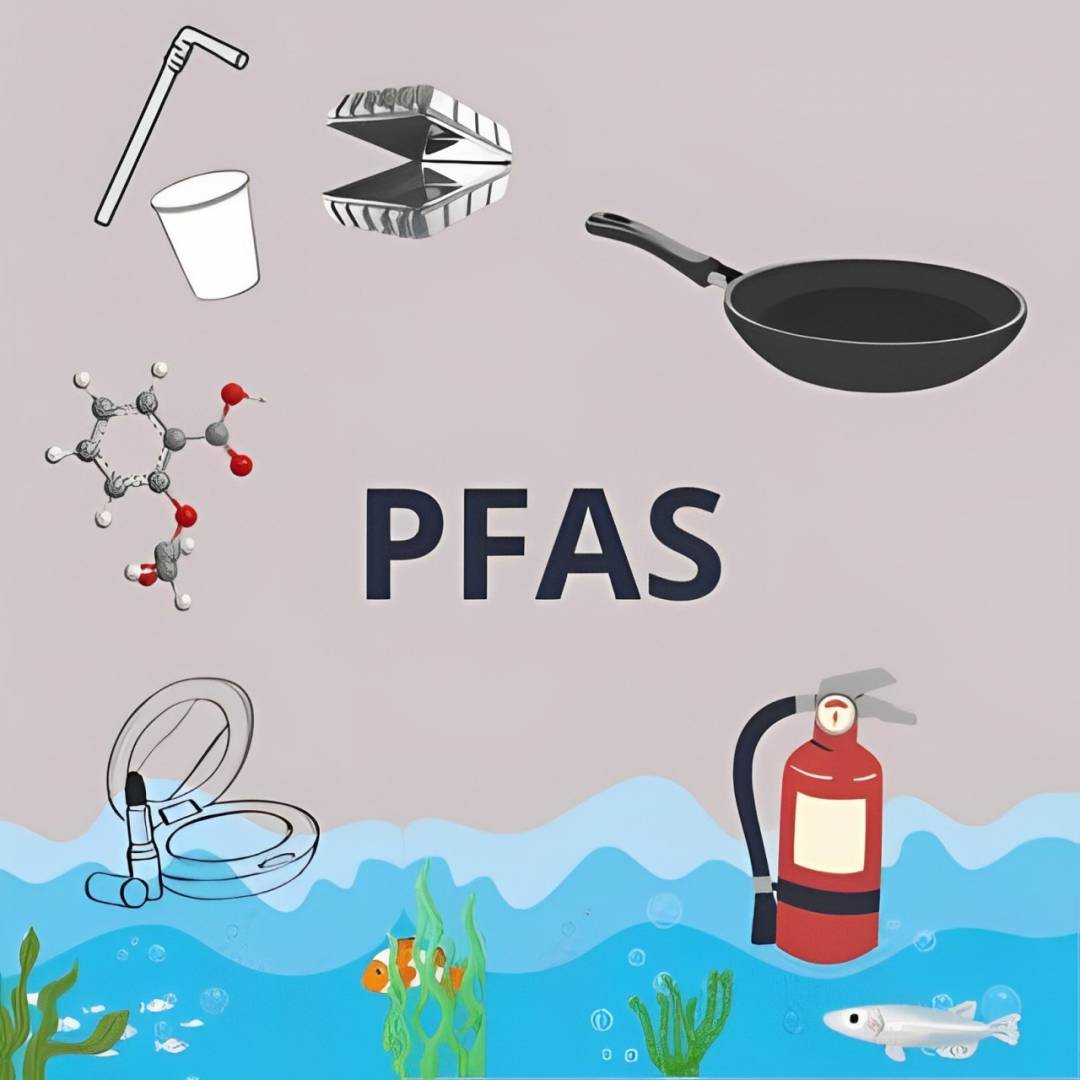
There are no standards governing PFAS in Quebec. However, Health Canada has established a target for PFAS in drinking water through a public consultation in 2024. This is a proposal for a provisional target of 30 nanograms per litre for a sum of 25 PFAS, with the aim of reducing exposure to these chemical substances 4. The MELCCFP (Ministry of the Environment, the Fight against Climate Change, Wildlife and Parks) has been monitoring since 2007 and has put in place rules to regulate human activities that may release PFAS into the environment 3.
Elsewhere in the world, a few laws are being put in place. In the United States, the EPA (Environmental Protection Agency) has established maximum concentration standards in drinking water of 0.02 ng/L and 0.004 ng/L for PFOS and PFOA respectively 3. The latter two are the two most present and dangerous substances 5. For its part, the European Union has planned to regulate the concentration in 2026 at 100 ng/L for the sum of 20 compounds 3.
[1] PFAS in our drinking water: A real danger and how to avoid them? (n.d.). Diproclean.com. https://www.diproclean.com/pfas-polluant-eau-potable-eliminer-solutions-pxl-167_202.html#:~:text=au%20charbon%20actif-,Qu'est-ce%20que%20les%20PFAS%20?,eau%20et%20à%20la%20gras
[2] PFAS present in drinking water in Quebec: five municipalities in turbid water. (n.d.). UdeM News, news from the Université de Montréal | UdeM News. https://nouvelles.umontreal.ca/article/2023/02/27/pfas-presentes-dans-l-eau-potable-au-quebec-cinq-municipalites-en-eau-trouble/
[3] Environment Quebec. (2023, February 27). PFAS and drinking water [Video]. YouTube. https://www.youtube.com/watch?v=fzybpipoGG8
[4] Standards and Guidance Values in Drinking Water | INSPQ. (n.d.). Institut national de santé publique du Québec. https://www.inspq.qc.ca/pfas/normes-eau-potable
[5] Government of Canada. (2024, August 9) Let's Talk Water: Perfluoroalkyl and Polyfluoroalkyl Substances (PFAS) in Drinking Water.
[6] Ministry of the Environment, the Fight against Climate Change, Wildlife and Parks. PFAS and drinking water. (n.d.). https://www.environnement.gouv.qc.ca/eau/potable/composes-perfluores/index.htm
We use cookies to understand how you use our site and to improve your experience. This includes personalizing content and advertising. By continuing to use our site, you accept our use of cookies, terms and conditions, privacy policy. Confused? Send us an e-mail.
I acceptWe use cookies
Respecting your privacy matters to us. We use cookies to personalize our content and facilitate your digital experience. Some cookies may be collected with your consent.
Essential
Essential cookies help make a website usable by enabling basic functions such as page navigation and access to secure areas of the website. The website cannot function properly without these cookies.
Performance
These cookies enable us to analyze navigation on our sites and improve their operation.
Customization
Preference cookies enable a website to remember information that modifies the behavior or appearance of the site, such as your preferred language or the region you are in.
Targeted advertising
These cookies help us limit the number of times you see an advertisement, personalize our offers and services according to your centers of interest, measure the effectiveness of an advertising campaign, and so on. They may be shared with our partners.
We use cookies
Respecting your privacy matters to us. We use cookies to personalize our content and facilitate your digital experience. Some cookies may be collected with your consent.